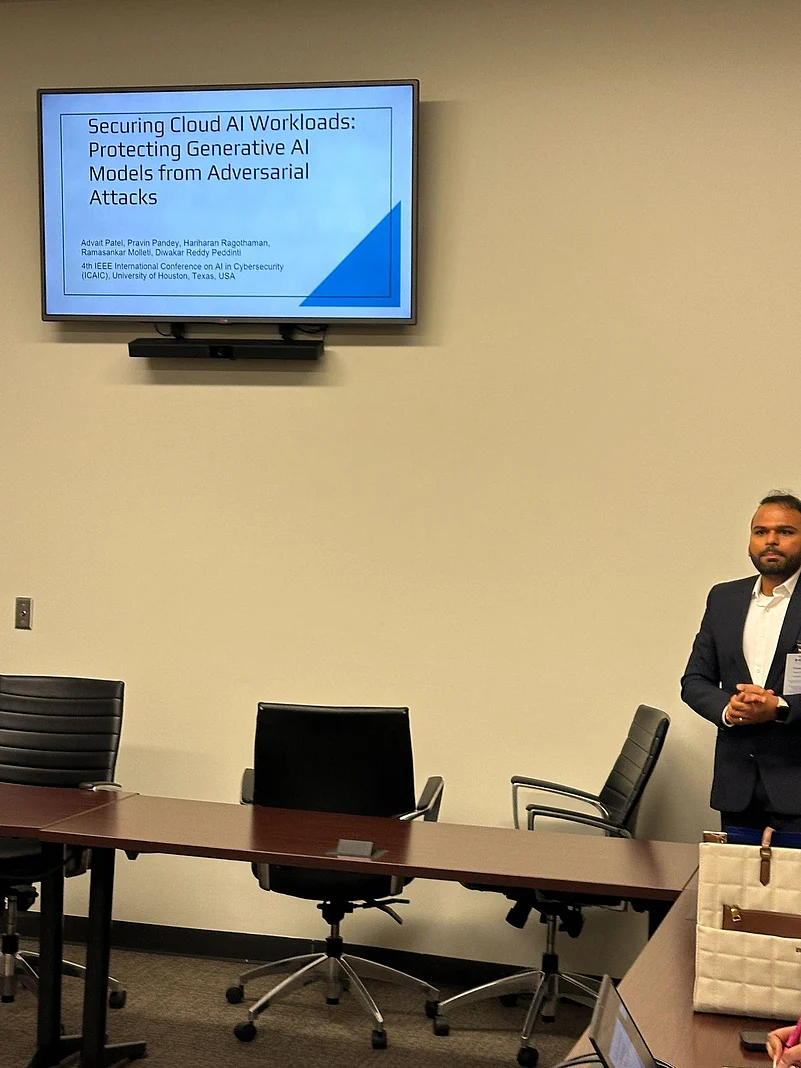As Artificial Intelligence continues its rapid ascent into every sector of the global economy, a looming challenge is gaining urgency: how do we secure these powerful systems, especially when they’re running in the cloud?
This was the question that inspired , a Senior Site Reliability Engineer at Broadcom and a rising voice in the cloud security community. His research, “,” received the Best Paper Award at the IEEE ICAIC 2025 conference held at the University of Houston and addressed key security challenges related to enterprise AI systems.
The Problem: When AI Becomes a Target
Generative AI systems like those that generate text, images, or even code have transformed fields ranging from healthcare to finance. But as Patel라이브 바카라 research points out, these same systems are increasingly vulnerable to adversarial attacks, especially when deployed in cloud environments.
“Cloud-hosted AI models operate in open, shared, and highly dynamic environments,” says Patel. “This creates both an opportunity and a vulnerability. You get the scale, speed, and accessibility, but you also expose these models to complex, often invisible forms of attack.”
Patel라이브 바카라 work identifies three major types of adversarial threats:
evasion attacks, where inputs are subtly manipulated to trick models,
poisoning attacks, where malicious data is injected during training, and
inference attacks, where sensitive data is extracted from models.
All three, when executed in the cloud, pose significant risks to AI integrity, user privacy, and trust.
A Deeper Look Into the Threats
One of the paper라이브 바카라 most striking contributions is its focus on the unique risks posed by cloud-based AI deployments. In such environments, AI workloads are often spread across shared infrastructure, accessed via APIs, and integrated into real-time services. This exposes them to attacks not just at the application level, but also during data transit, storage, and model inference.
“In a multi-tenant cloud system, one compromised service could open a side door into another tenant라이브 바카라 AI model,” Patel explains. “That라이브 바카라 where the real danger lies.”
For example, in a healthcare application, an adversary could subtly alter diagnostic data to produce misleading results or, worse, extract patient data through API misuse. Similarly, in financial systems, data poisoning can train models to make erratic or biased predictions, potentially triggering large-scale losses.
Building a Framework for Defense
Patel라이브 바카라 research identifies the problems and proposes a multi-layered defense strategy. The framework includes:
Adversarial training to make models robust against input manipulation
Defensive distillation to simplify and harden decision boundaries
Model verification and certification for security compliance
Cloud-native safeguards like end-to-end encryption, RBAC, and secure APIs
Continuous anomaly detection to flag unexpected model behaviors
Another critical component is AI explainability, or XAI. “We can’t secure what we can’t understand,” Patel notes. “By making models more interpretable, we’re better able to detect and respond to attacks in real time.”
The paper also calls for the integration of emerging technologies such as quantum-safe encryption and decentralized AI frameworks. These, Patel believes, will be essential in defending against next-generation threats.
Broader Impacts and Real-World Applications
Patel라이브 바카라 work demonstrates applicability across multiple domains. Whether it라이브 바카라 protecting autonomous vehicles from manipulated inputs, ensuring financial models remain free of bias, or safeguarding patient data in AI-powered diagnostics, his framework provides a blueprint for secure AI operations in the cloud.
The consequences of failure, he warns, go beyond technical loss. “Insecure AI leads to bad decisions, biased outcomes, and ultimately, a loss of public trust. And once that trust is gone, it라이브 바카라 hard to rebuild.”
With major enterprises deploying AI at scale and governments pushing for AI regulation, Patel라이브 바카라 research is arriving at a crucial inflection point. “AI will be embedded into everything from national defense systems to personalized medicine,” he says. “If we don’t secure it now, the consequences could be profound.”
Looking Ahead: From Research to Practice
Patel라이브 바카라 woke in AI security extends beyond academic research. He is also the creator of , an open-source, AI-powered Docker Security Analyzer. DockSec applies many of the principles from Patel라이브 바카라 research by scanning containerized workloads for secrets, misconfigurations, and vulnerabilities before they can be exploited.
“In a way, DockSec is the practical extension of my research findings,” Patel explains. “It's about translating theoretical security frameworks into operational tools that engineers and security teams can immediately use.”
His broader vision is to help organizations build AI systems that are secure by design—not merely secured through reactive patches.
Conclusion
As the world embraces AI in critical sectors like healthcare, finance, and national security, the need for robust, cloud-native AI security strategies has never been more urgent. Research efforts like Advait Patel라이브 바카라 play a pivotal role in addressing these emerging challenges.
By securing AI workloads proactively, Patel is contributing vital solutions to the global cybersecurity landscape and helping ensure that AI라이브 바카라 enormous potential does not come at the expense of trust, fairness, and privacy.
Through Best Paper recognition at IEEE ICAIC 2025 and ongoing open-source contributions, Advait Patel is poised to shape the future of AI security for years to come.














